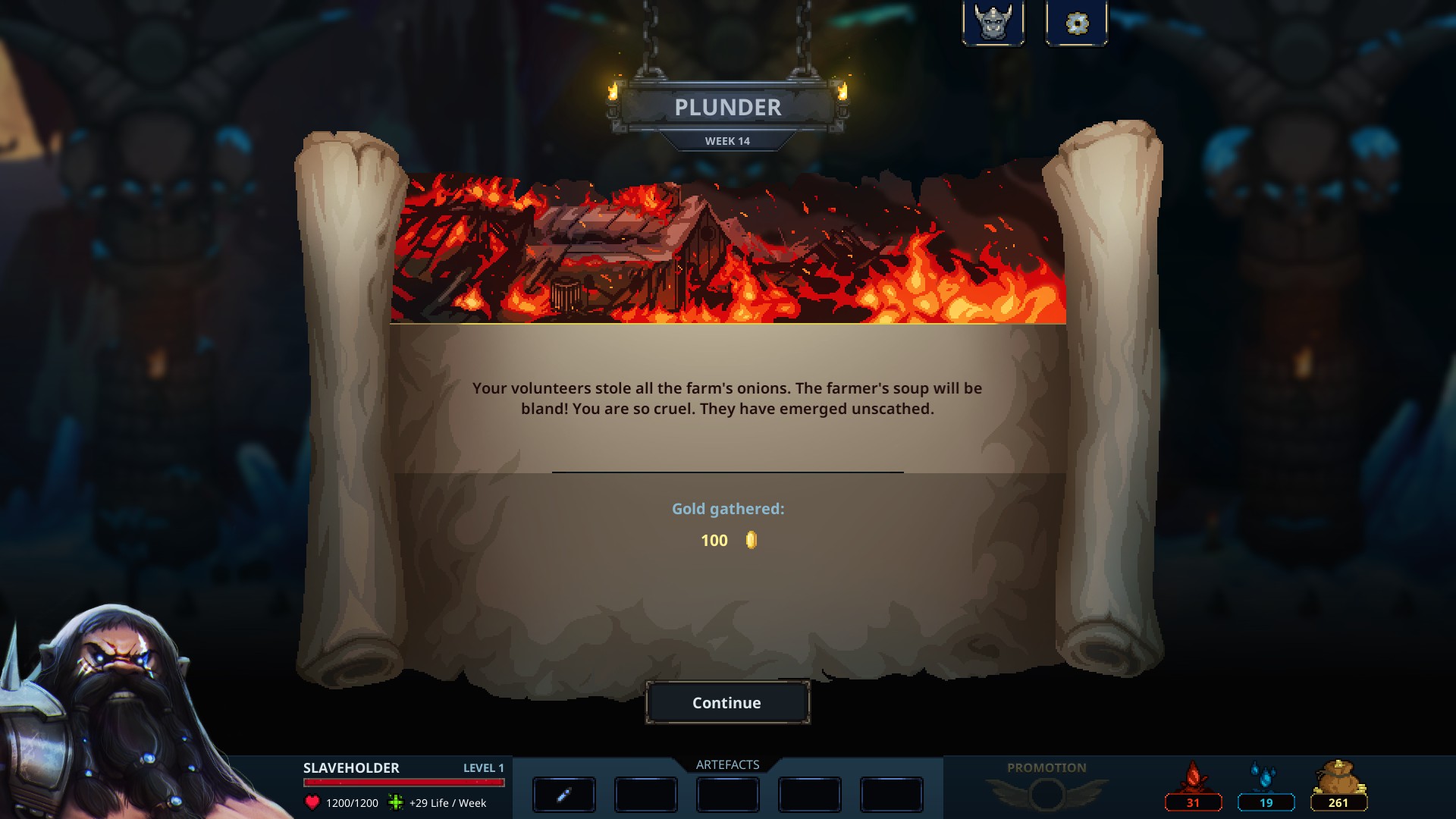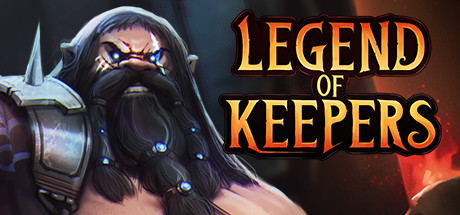This intriguing strategy game inadvertently shoots itself in the foot when it comes to holding players’ attention, as progression comes at the price of anything interesting you obtained.
Type: Single-Player
Genres: Dungeon Crawler, Strategy
Developer: Goblinz Studio
Publisher: Goblinz Publishing
Release Date: 29 April, 2021

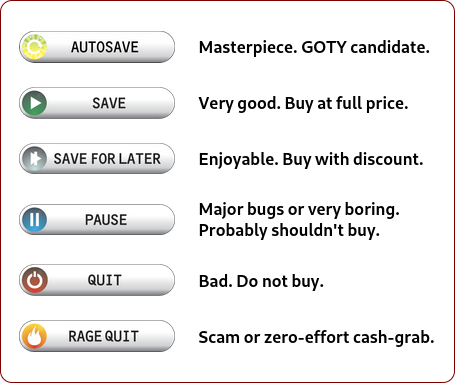
First Impressions
Legend of Keepers: Career of a Dungeon Manager (LK) released recently, but almost has 2,000 reviews already. Several of these stem from an Early Access build of the game, so with it now being fully launched, there should be even more to appreciate about this title. From what I’ve seen, there seems to be some division amongst players. Some will get addicted to what’s available, and play for dozens of hours, while others put in a fair amount of time, but find themselves worn down by that point. It looks promising either way, so I wanted to try my hand at it, to see whether this was a legendary keeper, or a legendary letdown.

Gameplay
Dungeon crawling games are quite popular, but as others have done before, LK flips the traditional roles around, as instead of playing the heroes, you instead are on the side of the monsters. As you take command of a dungeon, you’ll start off with 1 Master, unlocking 2 other options from progressing in the game. The Master is always the final barrier in a dungeon, with all the other rooms generating in a random order, though certain requirements seem to be in place, such as not placing 2 monster or traps immediately after the other. With the resources available to you, you’ll decide which traps to spring when, as well as which of your monsters will stand in the way of the 3 heroes seeking the treasure. This will be determined primarily based on the attacks the heroes can use, since being able to survive is necessary for your side to get some damage in, and if not kill or scare off any heroes, at least soften them up with damage and status effects. The combat system is a simplified, turn-based RPG, as you can’t use items or do anything beyond choosing one attack over another.
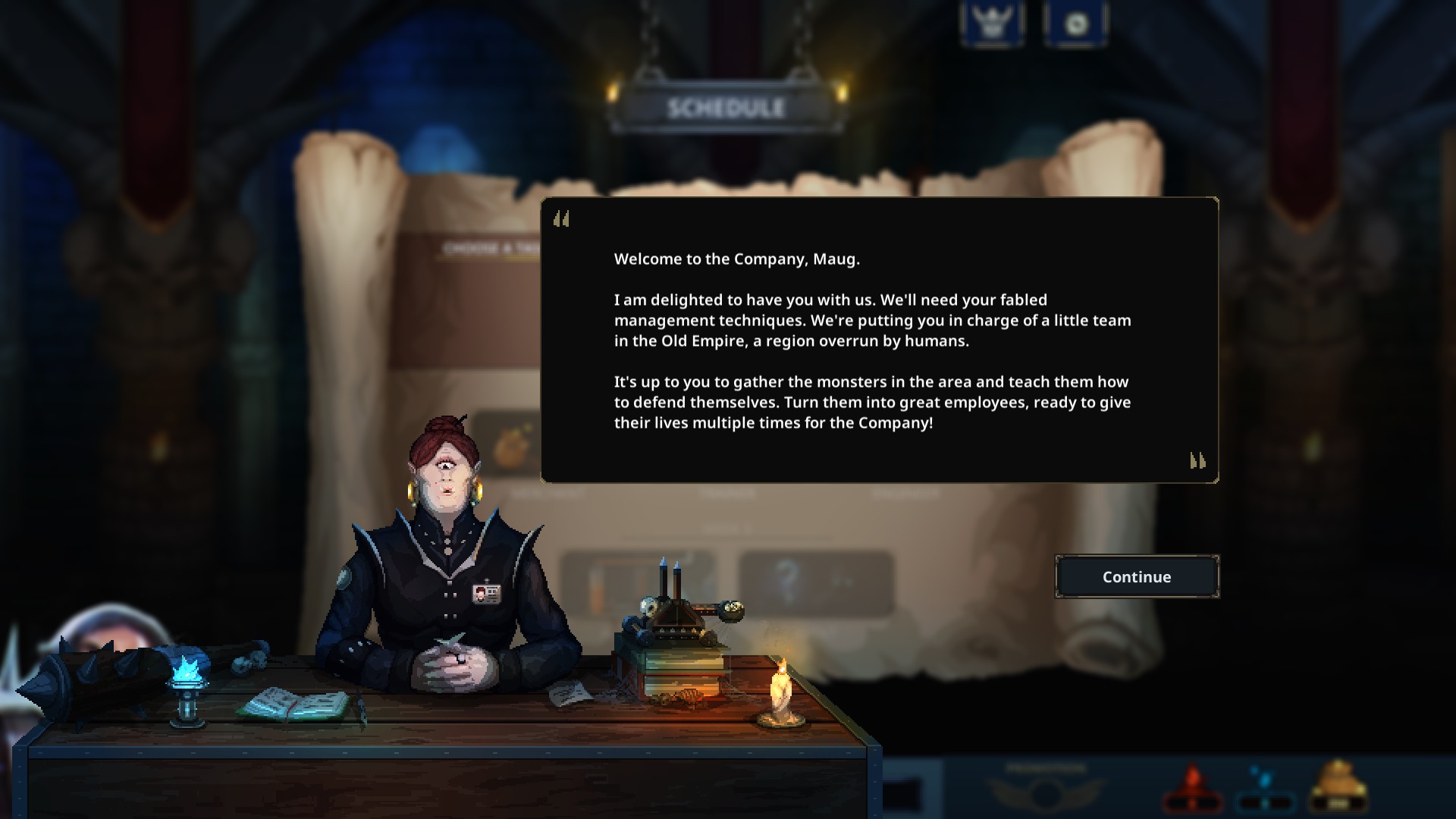
When you aren’t protecting a dungeon, you’ll go through week by week, selecting 1 of 2 or 3 options available to you. There’s a lot of possibilities, including: buying items from a Merchant, a random Event, sending 3 monsters out to Plunder, buying level-ups for your monsters from the Trainer, dealing with the vampire tax Collectors, and so on. It’s up to you how you want to handle the resources that matter to a Master, gold, blood, and tears. Money is spent on several goods, so it never hurts to earn more, while blood and tears tend to help strengthen the monsters. You can see 2 weeks in advance, so this helps you determine the right time to select one activity over another, as you might earn more money from an Event to spend on the Trainer 2 weeks from now. The very last activity will always be a fight against a Champion, with no weeks showing up afterwards. At this point, there’s no reason to hold anything back, so a monster will low morale is just as useful as a maxed-out one.
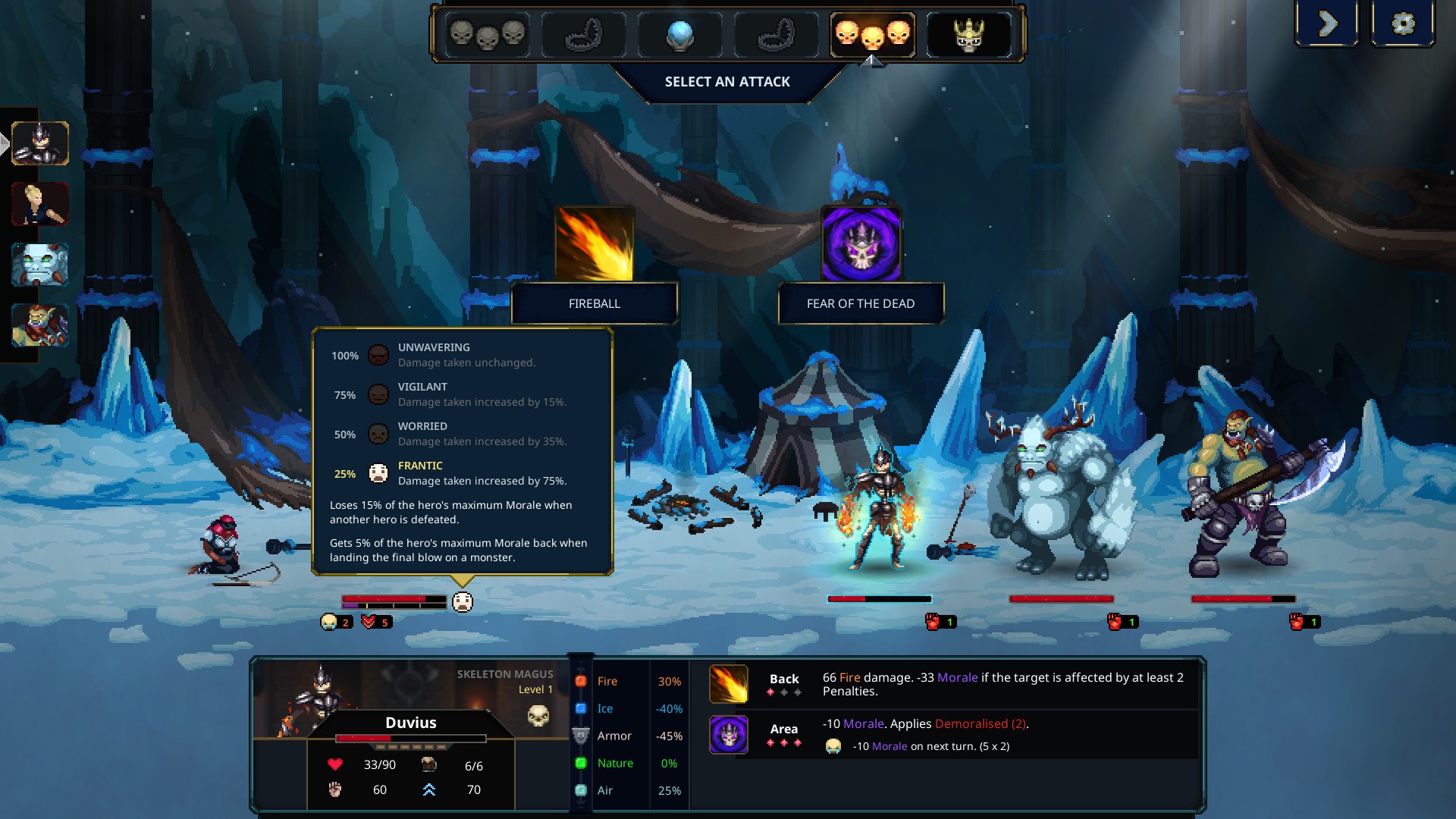
Controls
This is a game that’s easily played with just the mouse, with no reason to want to play with a controller. Everything is done with just left clicks, though you’ll sometimes drag the monster icons to move them from room to room or into the garrison. Since it’s a turn-based strategy game, there’s no hassle worrying about a time limit disrupting your thoughts, so that’s not a factor that could hurt the control scheme. Even a controller-centric person as myself had absolutely no gripes with this set-up.

Story
There isn’t much of a story to LK, though it has a framework that would suggest so. Throughout the game, you can control 3 different Master-level monsters, who have the authority to command regiments of their own. Each of them are hired into a company, which provides security for those who want to guard their treasure. It’s a bit meta, as they will implement recovery stations for the heroes’ benefit, since not doing so would mean nobody would want to raid the dungeon. It’s an odd balancing act of wanting heroes to invade, but not wanting them to succeed. Regardless, the 3 monsters you control are distinct in their design and approach at fending off heroes, but they’re not characters and there’s no story development.
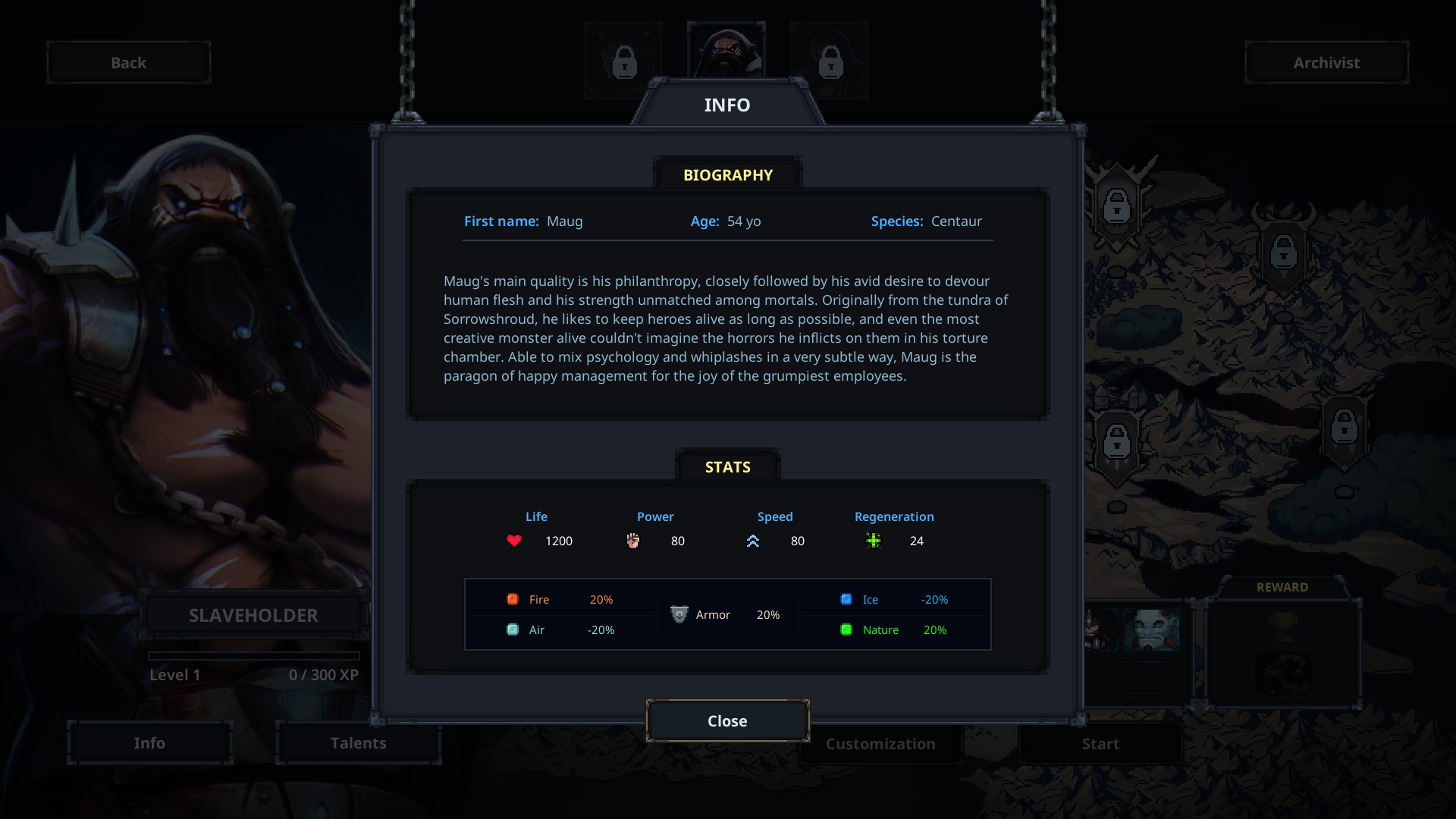
Graphics
Most of LK’s visuals are presented in still images, as various options will be presented with a simple image. An event with 3 options available won’t display anything after you pick an option, only representing the general idea with an NPC making the offer to you. Even when in the dungeon and fighting heroes, there’s not much action in the game, as each combatant has only 2 attacks, which always play out the same way, a recoil from taking damage, and a death animation. For the most part, they’ll only stand in place and jostle slightly. Overall, I enjoy the art direction and aesthetic of the game, but the lack of movement can make it feel a bit droll at times.
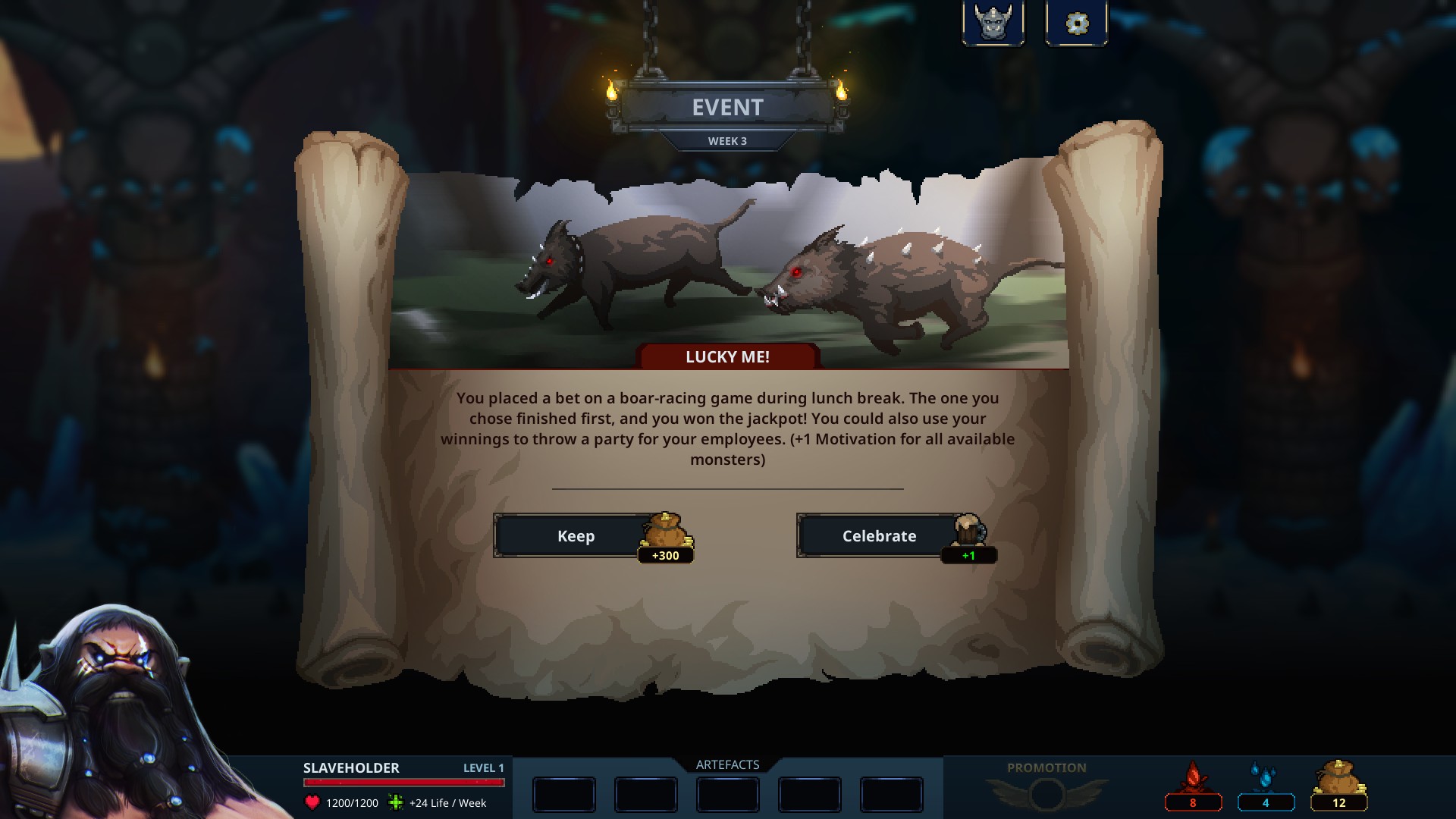
Sound Design
Strangely enough, throughout the game, there’s not really distinct music in any of the sections. In some places, you’ll hear thundering drums and deep horns playing, but it comes across less as music, and more like moody ambient noise. It does build off of the looming threat of a dungeon well enough, but not having more distinct music doesn’t help the sense that you’re doing the same things over and over again. Similarly, there’s some voice acting, but it mainly consists of short statements, like when the Slaveholder states, “Let’s get to work,” or “Fresh meat.” They sound fine, though the person with the most lines of dialogue is essentially a member of HR. She’s a fine source for exposition, it just seems a bit backwards to have a tutorial-like NPC have the most to say. The sound effects that play out in combat are sensible and impactful enough to get the point across.
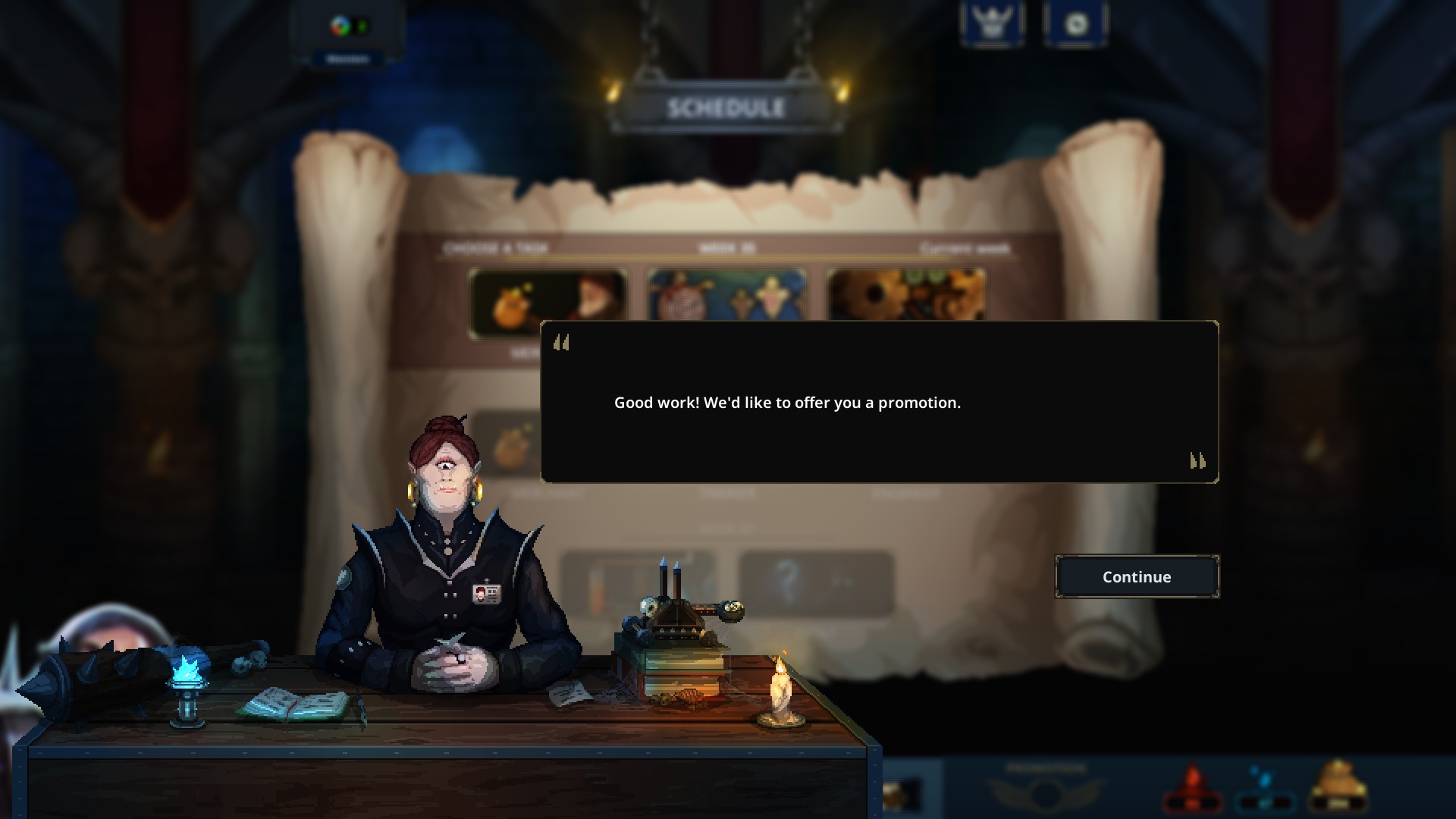
Pros
- You have to think strategically and respond wisely to the situations you encounter, but the simplicity of the design helps prevent your choices from being too complex. I’ve played strategy games where there are so many interactions and variables, it can lead to indecisiveness as you plan 5 moves ahead for the perfect, fool-proof plan. The learning curve in LK is short and simple.
- I enjoy the design of the monsters, because even though most of them are basic fantasy baddies, the art style makes them stand out and look at least somewhat original. The orc not so much, but even he looks pretty good.
Cons
- It doesn’t feel like you’re getting anywhere as you clear the dungeons, as you always start back over at square 1. The game works against itself in maintaining your interest.
- I was surprised at how quickly I seemed to exhaust the pool of Events and random activities that could come up out of the dungeons.
Tips
- Although you may think fighting weaker enemies initially, for less valuable rewards, is the better choice, it’s not really necessary. The Master is quite strong, and so long as you use your resources intelligently to at least chip away at the enemies, you’ll be able to handle them. Gaining early resources will give better inertia to clear the following weeks.
- Inadvertently, I’d go for a fighting style that kills heroes more than scaring them away. However, having the flexibility to realize that dropping their morale is the best option, even when you hadn’t planned on it, is very useful.
- Variety amongst your troops is crucial, since you’ll never know what stats the heroes will have. A weaker monster with the right resistances and elemental attack can devastate an otherwise tough foe.
Final Thoughts
Something I really enjoyed was when the circumstances were just right, and I could set up a 3-monster squad that’d synergize exceptionally well against the band of heroes. Having an Orc Sorcerer in the middle column, summoning more skeleton fighters as they die, feels like such an exploit. Another one that seemed even better was having a level 4 Yetigo hurl ice blocks, which will always stun an enemy with 2 negative statuses, as that can stun lock an enemy completely. In spite of how enjoyable a well-executed strategy can be, there’s a significant flaw to the design of LK, and that pertains to the long-term. With how it’s set-up, progressing in LK almost always feels like a punishment.

Clearing a dungeon doesn’t grant you the ability to maintain your current roster of monsters or artifacts, those are always pre-determined for you. All that carries over is the level-ups for your Master, but that doesn’t hold much weight with how insignificant the bonuses are: you get a slight buff to one of your attacks, you get 1 starter monster added you might not even like, etc. With no direct control over your starting conditions for each new dungeon, and with the amount of content recycling in-between them, it feels like the worst combination possible. LK does a good job of hooking players, as once I got a grasp for the game, I kept wanting to play. However, it demotivates you as you’re hit with same-y content repeatedly, with it feeling played out by about the 3rd or 4th dungeon, let alone the 15+ available. This is a case where I find the meat of the game good, but the framework could be improved upon so players feel more inclined to keep playing. I know some people will play LK for a long time, but I don’t recommend it because it doesn’t give enough reason for others like me to keep returning.
